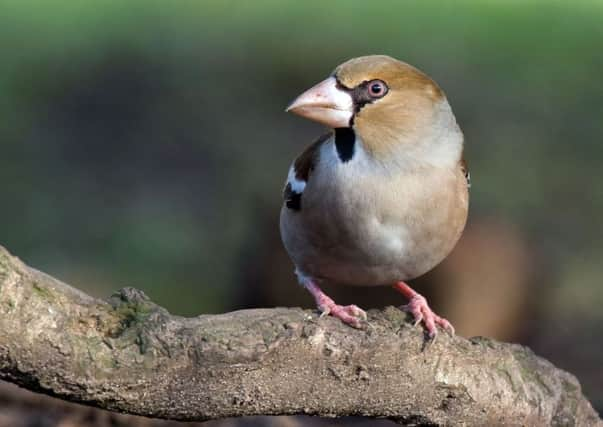Influx of the rare hawfinch


But the last week has seen an influx with ones and twos reported across Yorkshire and several large flocks in the south east. They are likely to have originated from populations further north in Europe which move south for the winter rather than hawfinches that have bred in this country and which are largely sedentary.
Certainly it is worth checking any hornbeam trees now as the seeds are a favourite hawfinch food, also the yew trees in churchyards as they like to both crack open the berries and eat the young shoots. Listen out for their clicking calls from high in the canopy, often the first indication that they are present.
Advertisement
Hide AdAdvertisement
Hide AdHawfinches are the largest finch found here and have a top heavy look because of their thick necks which hold powerful muscles and a large conical beak which, used together, are capable of cracking open even tough cherry stones.
They have an orange brown head, black bib, and are brown above, pinkish beneath with black and white on the wings.
Hawfinches are now a rare and threatened species in this country and are on the Red List of birds of maximum conservation concern because of a 76 per cent fall in the population between 1968 and 2011.
This contrasts with the rest of Europe where the population is relatively stable and with large numbers in Romania, Croatia, Poland and Germany. They are also regularly seen in Dutch parks.
Advertisement
Hide AdAdvertisement
Hide AdHawfinches only started to breed regularly in this country in the early 19th century and their numbers and breeding range steadily expanded until in 1972 they were breeding as far north as Aberdeenshire.
Numbers peaked between 1983 and 1990 when Yorkshire birders regularly saw flocks of hawfinches each winter at places such as Fountains Abbey and Duncombe Park in the north of the county and Woolley Woods and Roche Abbey in the south.
But since then, for reasons that are still unexplained, these sites have been abandoned with Clumber Park in North Nottingham now the only place where hawfinches might still be regularly seen.
A rare vagrant from North America, a cliff swallow, was seen by three people flying south past the seawatching hide at Spurn but unfortunately was not found again while a pallid swift was over Easington and the next day over Flamborough Head.
Advertisement
Hide AdAdvertisement
Hide AdRing ouzels were seen along the coast while both short and long-eared owls were coming in off the sea.
Flocks of twite were present at Spurn, Filey and Flamborough while there were also flocks of mealy redpolls and bramblings.
More yellow-browed warblers were also arriving while a Pallas’s warbler was reported on Carr Naze, Filey. Waders included a juvenile pectoral sandpiper at Austerfield, South Yorkshire.